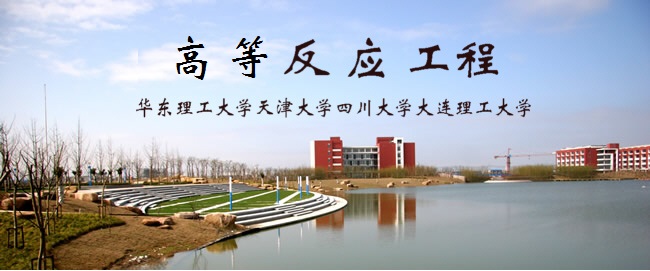
当前课程知识点:英语电影与文化 > Part I Form and Narrative Unit 1 Film Form I. > 1.5 Mise-en-scène: performance > Video
In this section
在本讲中
we will focus on character’s performance.
我们来关注角色的表演
Normally speaking
通常情况下
we tend to judge the performance of actors
我们倾向于判断演员的表现
by “how real they perform”.
通过“演员表现的真实程度”
However, how real they perform
然而,他们表演的真实程度
is actually controlled by the film director.
实际上是由电影导演控制的
In film studies, an actor or actress
在电影研究中
is replaced by the work “figure”
演员会被作品“形象”所取代
as it includes a person
因为这个形象可以是人
an animal or even an object.
动物甚至一个物体
The director manipulates the behaviors of a figure
导演控制“形象”的行为
mainly in two ways
主要通过两种方式
through facial expressions and movement.
即:面部表情和动作
Mise-en-scène allows such figures
场面调度可以让这些“形象”
to express feelings and thoughts
表达感情和思想
through movements
通过动作
and facial expressions.
和面部表情
As we see from this picture
我们可以看到
from Gone with the Wind
这张《乱世佳人》中的照片
the female figure Scarlett
斯嘉丽的女性形象
shows up an expression of delight
流露出一种喜悦
and indifference.
和冷漠的表情
This is shown at the very beginning of the film
这是在影片开头
when her house and the whole southern part
她的房子和整个南部
are in their last minute of glory and peace.
处于荣耀与和平的最后一刻时
However, later
然而
as the Civil War takes place
随着内战的爆发
men are either injured or killed
人们要么受伤,要么被杀
houses are torn down by fire
房屋被大火摧毁
leaving women alone
留下妇女
fighting against intruders
独自对抗入侵者
hunger and insecurity.
饥饿和不安
If we compare this picture with the next one
如果我们把这张照片和下一张照片进行比较
we can easily notice the changes
就可以很容易地注意到
on Scarlett’s face.
斯嘉丽脸上的变化
In this second shot
在第二个镜头中
her facial expressions suggest terror and alert.
她的面部表情表现出恐惧和警觉
The war came to an end
战争结束了
but leaving people with all sorts of trauma(创伤).
但却留给人们各种各样的创伤
Scarlett moved back home
斯佳丽搬回了家
and one day found a man breaking
一天,她发现一个男人闯进房子
into the house for jewelry.
抢劫珠宝
Her facial expressions differ dramatically
她的面部表情
from the first one
与之前
where she still enjoys a comfortable life.
仍享受舒适生活的样子截然不同
Now, she clearly shows more bravery
现在,她清楚地展现出更多的勇气
and determination
和决心
as she is about to shoot this man
因为她准备射杀这个人
for self-protection.
以自保
This performance also helps the audience
这场表演也帮助观众
build up the impression that
树立了这样的印象
Scarlett has grown into a woman
斯嘉丽已经成长为一个
who can take up as much responsibility as a man.
能像男人一样承担责任的女人
Another thing to notice
另一个需要注意的是
is the combination of action(动作)
动作
and camera distance(摄影机距离).
和摄影机距离的组合
Conventionally speaking
按照惯例
if it is the figure’s mental activity
人物形象的心理活动
that is to be emphasized
如果要强调的话
a close-up(特写) is used
就会使用特写
as we saw in the two shots earlier.
就像我们在前面的两张图片中看到的那样
But if it is the body movement that’s in focus
但如果身体运动是焦点
then the camera may be placed
那么摄影机机则会放在
in a longer distance from the figure.
离人物一个更远距离的位置
Take the next shot for example.
以下一镜头为例
It is one of the most iconic ones
它是最具标志性的镜头之一
in Gone with the Wind.
在《乱世佳人》中
It’s shown on many occasions
在许多场合
such as in posters.
(如海报)中都有展示
The shot is taken where Scarlett swears
镜头中的斯嘉丽发誓
that she would do anything
会做任何事
to prevent her family from hunger and death.
来防止家人挨饿和死亡
She lifts one of her hands
她举起一只手
and put it into a fist.
慢慢捏成拳头
Although backlighting is used
虽然使用的是逆光
and we cannot see her face
我们看不到她的脸
her body forms into a posture
但她的身体形成了
which suggests bravery and determination.
一种能够表明勇敢和决心的姿态
Meanwhile
与此同时
the camera gradually pulls away from her
镜头渐渐地从她身边拉开
leaving a goddess-like silhouette(轮廓,剪影).
留下一个女神般的剪影
This concludes Section 5 of Unit 2
第二单元第5讲
performance. In the next section
“表演”到此结束。在下一讲中
we will move on to look at the bigger picture
我们将学习
namely how the mise-en-scène elements
这些场面调度元素
are arranged in a frame
是如何整体应用在一个景框内
and the functions they have.
以及它们的功能
Thank you for watching.
谢谢观看
-1.1 Overview
--Video
-1.2 Mise-en-scène: setting
--Video
-1.3 Mise-en-scène: lighting
--Video
-1.4 Mise-en-scène: character appearance
--Video
-1.5 Mise-en-scène: performance
--Video
-1.6 Screen space and composition
--Video
-1.7 Case study
--Video
-Unit1 Questions for discussion
-Unit 1 单元测试
-2.1 Introduction of cinematography
--Video
-2.2 Cinematography: angle of framing
--Video
-2.3 Cinematography: camera distance
--Video
-2.4 Cinematography: mobile framing
--Video
-2.5 Case study
--Video
-Unit 2 Questions for discussion
-Unit 2 单元测试
-3.1 Overview
--Video
-3.2 Openings, closings, and story development
--Video
-3.3 Range of story information: restricted or unrestricted
--Video
-Unit 3 Questions for discussion
-Unit 3 单元测试
-4.1 Overview
--Video
-4.2 Editing and speed of narrative
--Video
-4.3 Chronology and continuity editing
--Video
-4.4 Flashbacks and editing
--Video
-Unit 4 Questions for Discussion
-Unit 4 单元测试
-5.1 Overview
--Video
-5.2 What is semiotics?
--Video
-5.3 Christian Metz
--Video
-5.4 Roland Barthes (Part 1)
--Video
-5.5 Roland Barthes (Part 2)
--Video
-5.6 Case study: 2001: A Space Odyssey
--Video
-Unit 5 Questions for Discussion
-Unit 5 单元测试
-6.1 Overview
--Video
-6.2 Origins of film ideology
--Video
-6.3 Media and technology
--Video
-6.4 Cultural hegemony and counterhegemony
--Video
-6.5 Case study: Star Trek
--Video
-Unit 6 Questions for discussion
-Unit 6 单元测试
-7.1 Overview
--Video
-7.2 Woman and film
--Video
-7.3 Feminist film theory and practice
--Video
-7.4 Case study: Three Billboards Outside Ebbing, Missouri
--Video
-7.5 Masculinity
--Video
-7.6 Queer Cinema
--Video
-Unit 7 Questions for discussion
-Unit 7 单元测试
-8.1 Overview
--Video
-8.2 Race and racism
--Video
-8.3 Stereotypes of racial representation
--Video
-8.4 Whiteness
--Video
-8.5 Case study: Rabbit-Proof Fence
--Video
-Unit 8 Questions for discussion
-Unit 8 单元测试
-9.1 Overview
--Video
-9.2 Edward Said and Orientalism
--Video
-9.3 Cultural Imperialism
--Video
-9.4 Self-orientation
--Video
-9.5 Case study I: Mulan
--Video
-9.6 Case study II: M Butterfly
--Video
-Unit 9 Questions for discussion
-Unit 9 单元测试
-10.1 Overview
--Video
-10.2 Early Background
--Video
-10.3 Jacques Lacan
--Video
-10.4 Laura Mulvey
--Video
-10.5 Case Study: Shutter Island
--Video
-Unit 10 Questions for discussion
-Unit 10 单元测试
-Unit 10 Film and Psychoanalysis
-11.1 Overview
--Video
-11.2 Story
--Video
-11.3 Character: the enigmatic English patient
--Video
-11.4 Mise-en-scène: setting
--Video
-11.5 Narrative
--Video
-11.6 Music
--Video
-Unit 11 Questions for discussion
-Unit 11 单元测试
-Unit 11 The English Patient: Form and Narrative
-12.1 Signs and Symbols
--Video
-12.2 Nationalism in The English Patient
--Video
-12.3 Almasy as the misogynist and Katharine as a feminist
--Video
-12.4 Kip as the Other
--Video
-Unit 12 Questions for discussion
-Unit 12 单元测试


